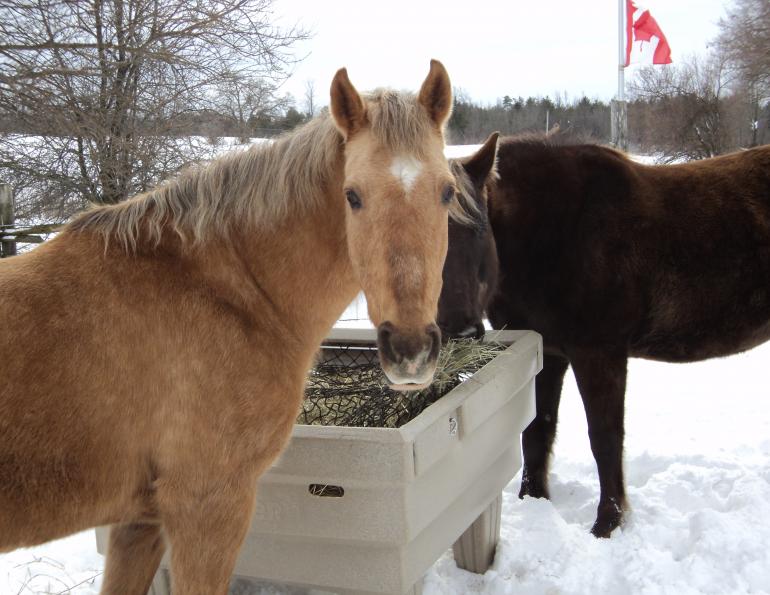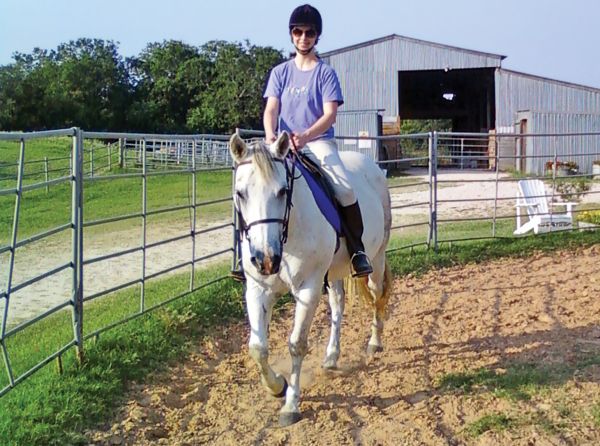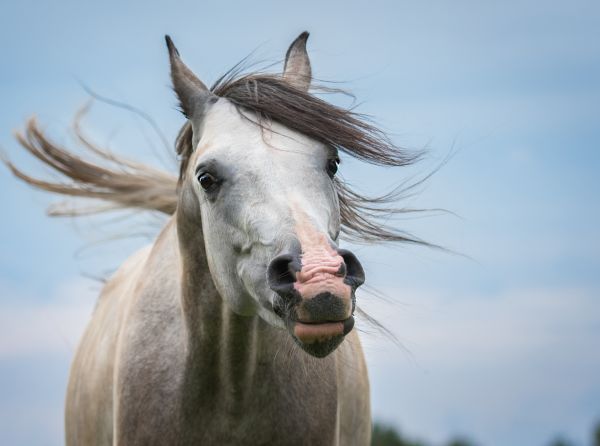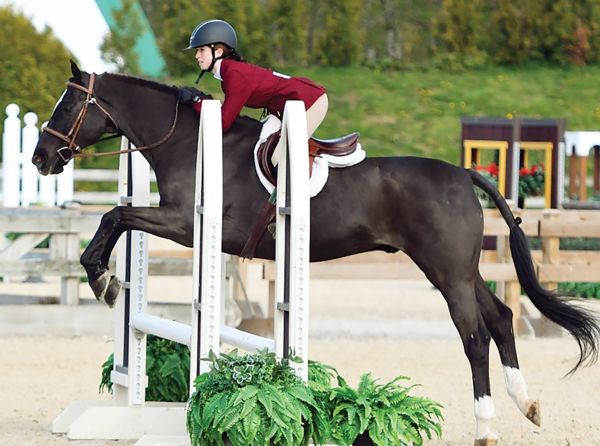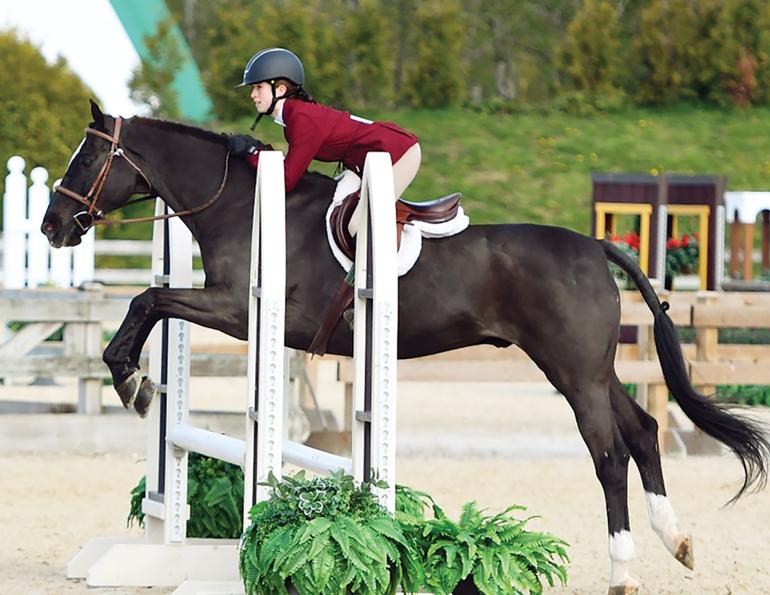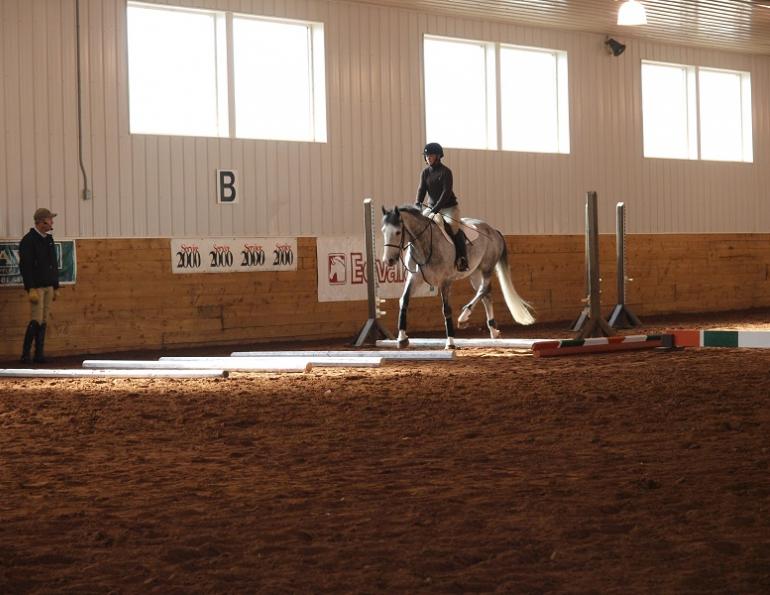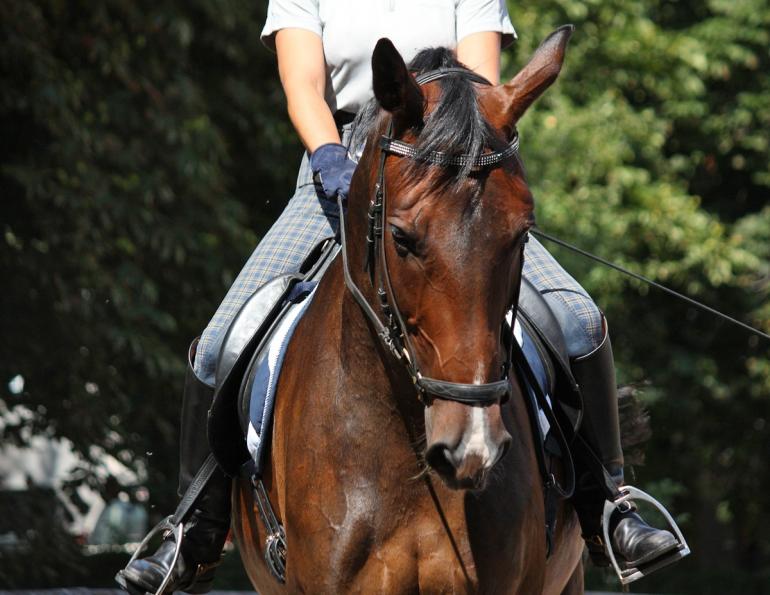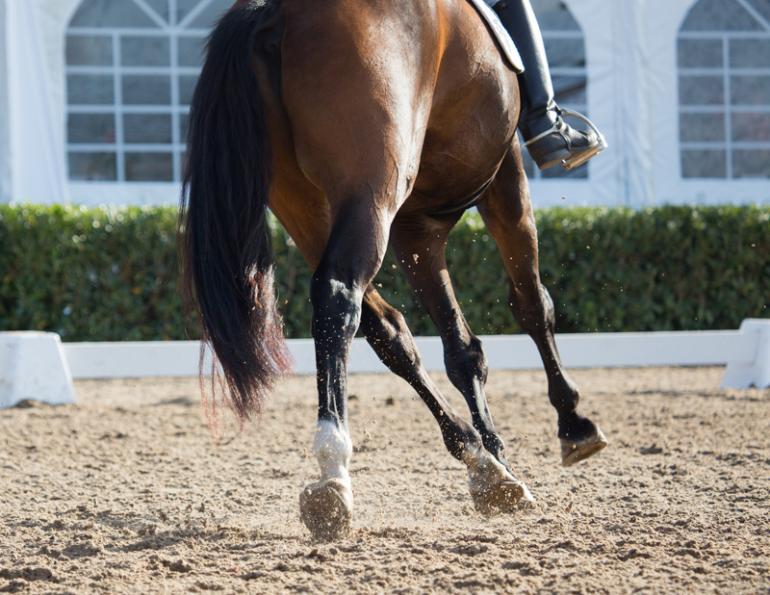By Sue Wilson, Wishing Well Services Ltd.
Stabling and turnout practices are dependent upon many factors. These include owner preferences, setup of the barn, number of horses, size of paddocks, availability of outdoor shelter, sources of food and water, gender mix, as well as the health and work requirements of individual horses.
It seems to me that a lot of horses are kept in stalls most of the time, with many stables limiting turnout to a fraction of the day and keeping horses inside during the night and in cold weather. This makes sense based on our human schedules and needs. But does it make sense when considering the different sleeping and eating schedules between humans and horses?
- Humans sleep for seven to nine continuous hours, once a day, of which 90 to 120 minutes is REM sleep. Horses power nap sporadically over 24 hours, resulting in five - seven hours of rest time and 30 minutes of REM sleep.
- Humans eat three meals a day, consuming a lot of food in three short periods of time. Horses evolved over time to consume small amounts of food throughout the day and night, spending 10 to 17 hours grazing during 15 to 20 grazing periods.
After years of casually observing my horses’ preferences, I gradually learned they were quite different from mine. Putting a horse in its stall to “sleep for the night,” bringing it inside out of the cold (temperatures below freezing), or feeding “two or three meals a day” started to seem anthropomorphic to me.
Our horses live in a large bank barn with the door to their paddocks always open. Over the years, their whereabouts would often surprise me. Once during a particularly nasty storm with driving winds and icy rain, I found them all outside with their tails to the wind, tinkling with ice. On pleasant summer afternoons, I would often find them all in the barn. This seemed contrary to conventional turnout practices, so I decided to track my horses’ location by GPS.
In 2019, we had a mixed herd of eight horses at our farm near Guelph, Ontario. The horses live on a nine-acre paddock with access anytime to shelter in a barn that consists of a 740-square-foot common stall with six standing stalls. When seasonally required, free-choice hay is always available in three widely-spaced OptiMizer slow feeders in the paddock and hay bags in the standing stalls. Water is also available in the paddock and in the common stall. The horses are turned into their box stalls once daily for about an hour for grain, grooming, and health checks. Otherwise, the horses can choose to be in the barn or in the paddock.
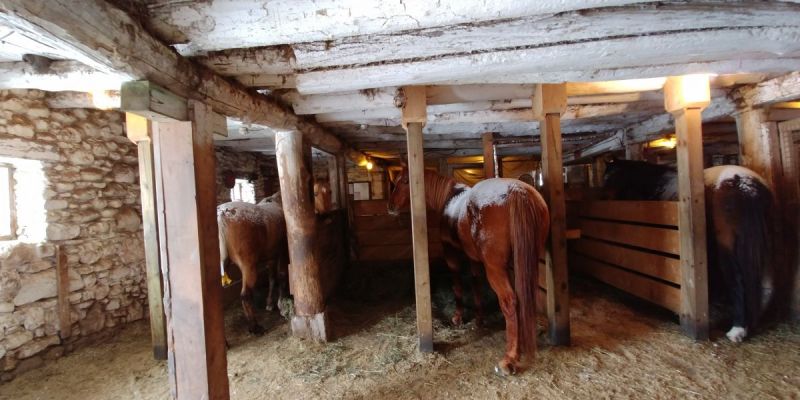
Eating hay in the common stall.
The horse I studied was our 20-year-old Kentucky Mountain horse named Whisky. He is the most dominant horse in the herd and can be anywhere in the pasture or barn without opposition from the other horses. His location also seemed typical of the rest of the herd, since they tend to stick together as they move from place to place.
I attached a Garmin eTrex-10 GPS to Whisky. In the winter, I braided it into his tail and in the spring/summer, I attached it to the chin strap of a breakaway halter. The batteries were replaced daily, and we kept a log of all human interactions and barn temperature throughout the study periods. Whisky has a seasonally appropriate natural coat, and blankets or fly sheets were not required over the study periods.
Whisky’s location was tracked by the GPS every minute for three seasonal study periods totalling 571 hours:
- January 25 to February 4, 2019 (Winter)
- May 19 to 26, 2019 (Spring)
- July 5 to 15, 2019 (Summer)
The data was downloaded into Garmin MapSource and Whisky’s location each minute was classified as either “barn” or “yard” based on the GPS coordinates. Location data was summed for each hour for comparisons of location to time of day and weather conditions. Hourly weather data was collected from the Guelph Turf Grass National Weather Station, which is located 10 km northwest of the farm. This data included temperature, wind speed, wind chill, and humidex.
During the study period, Whisky only spent 32.9 percent of his time in the shelter of the barn. This proportion of time varied considerably during the three seasons. He spent significantly less time in the barn in the spring (12 percent) compared to the winter (30 percent) and summer (51 percent). The amount of time even varied significantly on a daily basis, with less than 10 percent of the time in the barn on February 4, May 20, and May 22, and the most time inside on July 6 (69 percent), July 8 (60 percent), and January 31 (58 percent).
Related: How to Make Rotational Grazing Work on Your Horse Farm

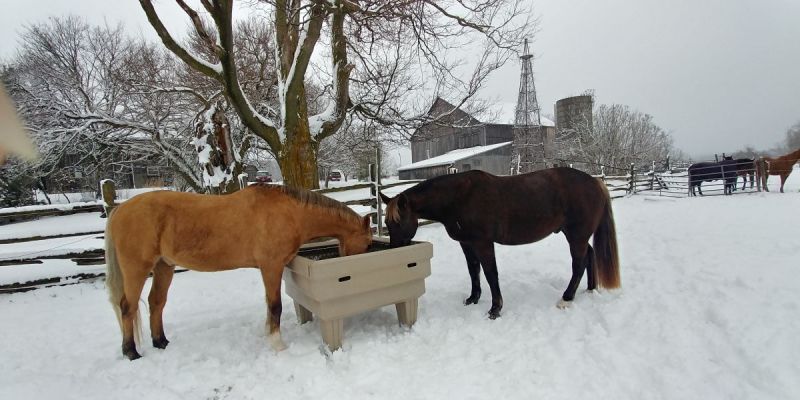
The weather conditions ranged widely over the study periods. Hourly average temperatures including wind chill in the winter or humidex in the summer ranged from -36 to +37 degrees C. To tease out the impact of temperature on his choice, I divided the temperature range dataset into 57-hour deciles and analyzed Whisky’s location over this range (Figure 1). Whisky spent significantly more time in the barn during the four extreme temperature deciles (cold temperatures from -36 to -18 degrees C or hot temperatures +20 to +37 degrees C) versus during the six mid-range deciles (-18 to +20 degrees C). Specifically, he was in the barn 51 percent of the time during the measured extreme cold and hot temperatures versus only 18 percent of the time during mid-range temperatures.
FIGURE 1

I also wondered how his choice varied with the time of day and found that it differed with the season (Figure 2). In the winter, the proportion of time spent in the barn peaked at 60 percent during the “dead of night” (midnight to 4am). In the summer, the proportion of the time spent in the barn peaked at 76 percent during the “heat of the day” (noon to 4pm).
FIGURE 2

What Does This Mean?
Taking a look at turnout from a horse’s perspective helps us to re-ask some fundamental questions:
- How much turnout is optimal for my horse?
- What time of day or night is the best for turnout? Does this vary with the season and weather conditions?
- What weather conditions, if any, should my horse be kept in?
During our study, Whisky chose to spend most of his time outside. His choices were related primarily to temperature and less to the time of day. For example, during what I consider to be cold, cool, and moderate temperatures (-18 to +20 degrees C), he was outside 82 percent of the time. Even in terribly cold weather (-23 to -36 degrees C), he was outside half the time! On the other hand, in warm temperatures when I tend to enjoy lazing around outside (+20 to +37 degrees C), Whisky chose to spend the majority of that time (60 percent) in the barn.
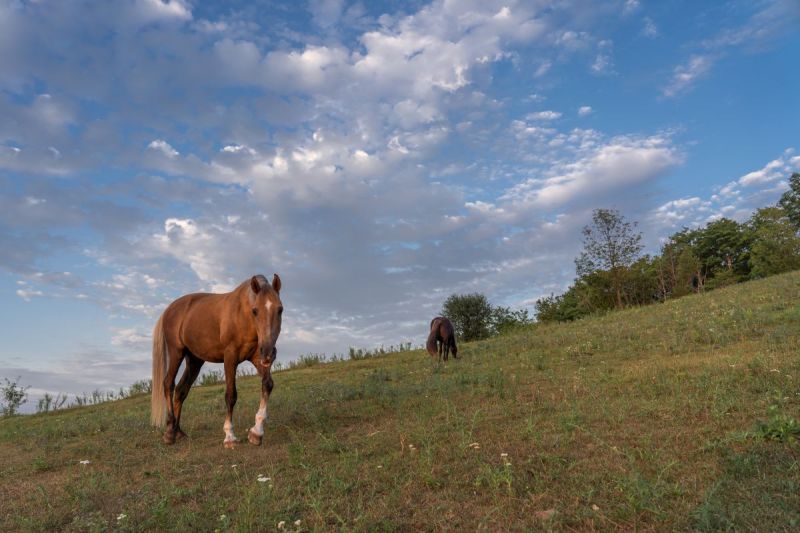

It was most interesting that Whisky’s choices were not consistent with typical turnout schedules. Contrasting two extremes:
- He was outside continuously from 9:21pm February 1 to 12:56am on February 2 in a windchill of -22 degrees C versus choosing the shelter of the barn at -8 degrees C.
- He was in the barn continuously from 12:41pm to 3:48pm on July 6 when the temperature outside peaked at 37 degrees C at 2:00pm and the barn temperature was a relatively cool 22 degrees C.
Our stabling setup lets our horses decide their own turnout schedule every minute of every day. For stables that have to make these choices on behalf of their horses, turnout could be optimized each day if it is considered from the perspective of a horse.
Related: How to Extend Your Horse Hay Supply
Related: Get Your Horse on a Track System
This article is based on the results of a study presented at the 15th International Equitation Science Conference held at the University of Guelph on August 19, 2019.
Photos are courtesy of Sue Wilson.



